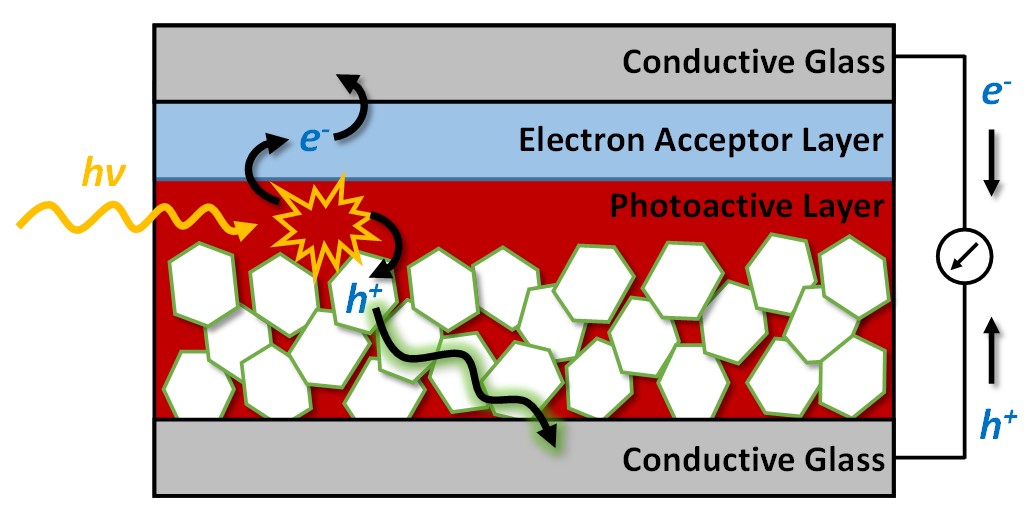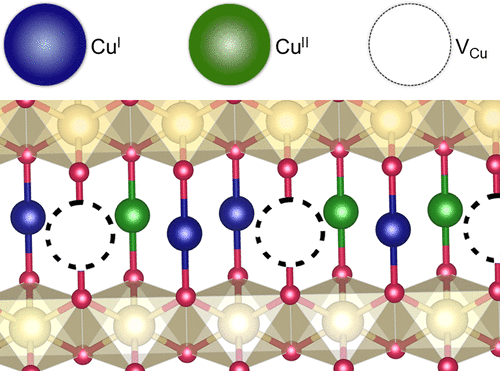Nanocrystalline CuMO2 (M = BIII, AlIII, GaIII, InIII, ScIII, CrIII) metal oxides are an attractive family of wide band gap p-type semiconductors with high demand for applications in organic photovoltaics, perovskite solar cells, and dye-sensitized solar cells. In these devices, CuMO2 materials act as hole transport layers whereby they facilitate the transfer/transport of electron vacancies (i.e. holes) from the photoactive layer to the external circuit. Currently, NiO is the most well studied p-type metal oxide within this field; however, serious challenges exist with regard to its low hole mobility and lack of transparency in the visible region.

CuMO2 materials have been reported to have very large hole mobilities (10 cm2 V-1 s-1 for single crystalline CuAlO2) with band gaps greater than 3.1 eV. Large hole mobility in metal oxide materials is rare due to the large effective masses of holes in the O 2p valence band. In CuMO2 materials, rapid hole transport is attributed to delocalization of the valence band over Cu 3d and O 2p orbitals as well as the layered delafossite crystal structure which features of planar sheet of CuI atoms stabilized by edge-sharing MIIIO6 octahedra.
Research in our group focuses on the synthesis and fundamental characterization of structural and electronic properties of these high surface area, nanocrystalline materials. We are specifically interested in understanding the nature and density of defects states and how they may contribute to their overall function. We are also highly interested in the studying the kinetics and efficiency of hole transfer reactions at the solid-solution interface.
Publications related to this work:
- “Lithium Dependent Electrochemistry of p-Type Nanocrystalline CuCrO2 Films” ChemElectroChem 2022, 9, e202200825.
- “Defining the Role of Cr3+ as a Reductant in the Hydrothermal Synthesis of CuCrO2 Delafossite” Inorg. Chem. 2022, 61, 8349-8355.
- “Group 13 Lewis Acid Catalyzed Synthesis of Metal Oxide Nanocrystals via Hydroxide Transmetallation” Nanoscale 2021, 13, 11505-11517.
- “Electrochemical Impedance Spectroscopy of Metal Oxide Electrodes for Energy Applications” ACS Appl. Energy Mater. 2020, 3, 66-98.
- “Evidence and Influence of Copper Vacancies in p-Type CuGaO2 Mesoporous Films” ACS Appl. Energy Mater. 2019, 2, 19-28.
